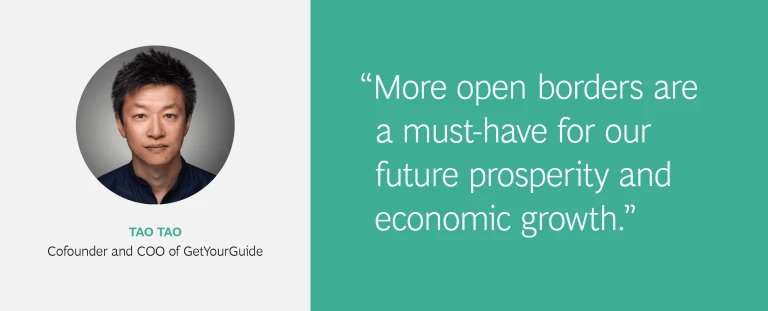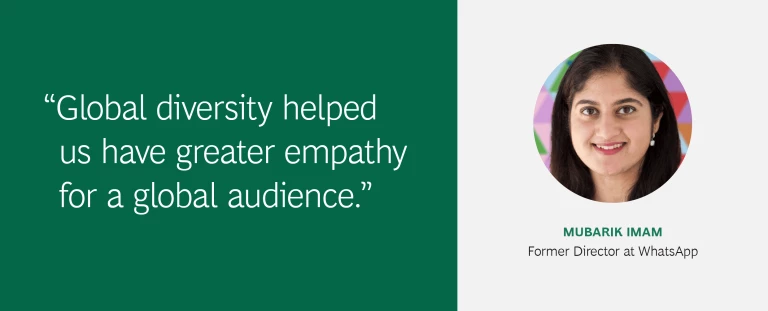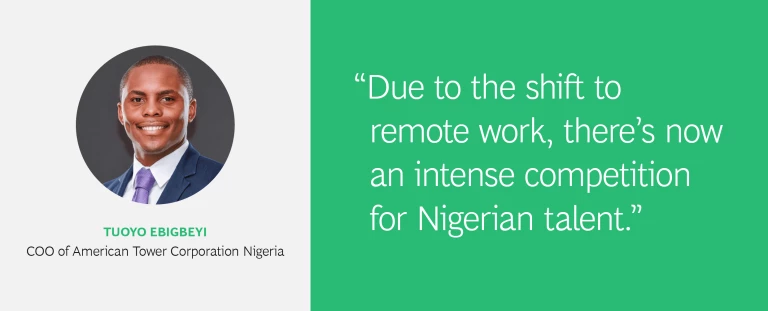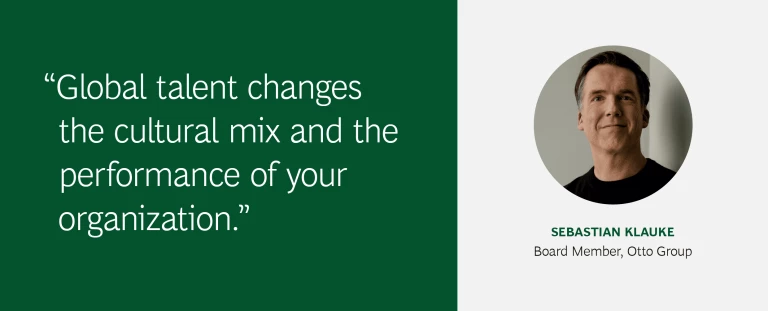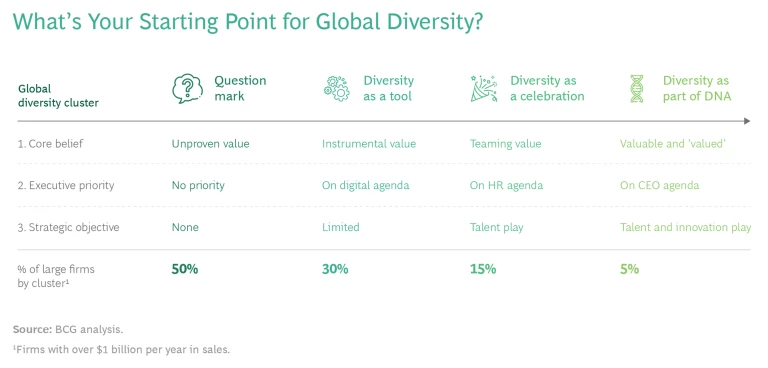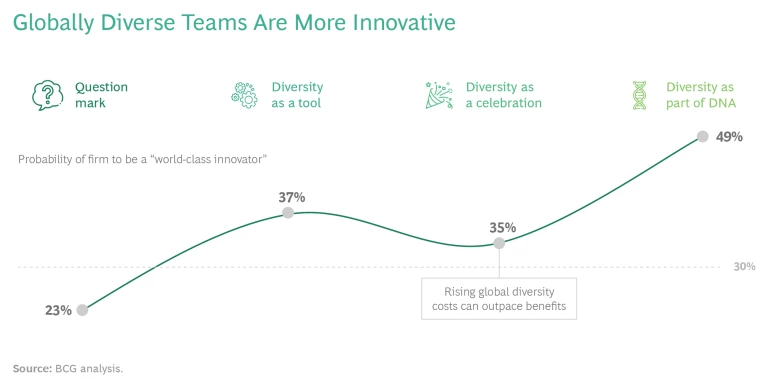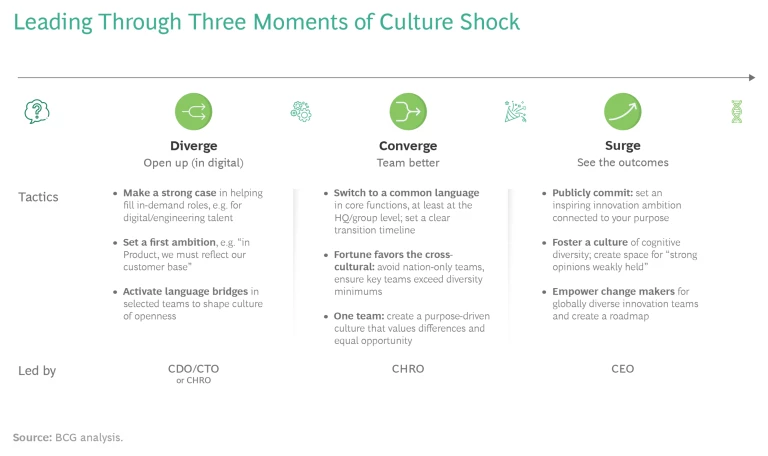“There is only one way to see things, until someone shows us how to look at them with different eyes.”
—Pablo Picasso
Where do new ideas come from? Innovations that propel our societies forward often come from people who look at the familiar with fresh eyes, connecting and combining what’s previously been separate. For such innovators, crossing boundaries—not only mental boundaries, but sometimes actual physical borders—is the key to imagining new possibilities.
Talented, creative people can be found in every part of the world. Bringing together that diversity of talent enables companies and countries to see things in a new way and, our research shows, ignites the much-needed innovative spark that drives sustainable growth.
A Moral Cause with a Business Case
Reducing the obstacles to global migration, and building bridges to opportunity for talented people regardless of where they were born or what their circumstances might be, is a moral cause that also has a strong business case. The war in Ukraine, along with ongoing conflicts in Afghanistan, Syria, and elsewhere, reminds us that not all migration is voluntary—which only makes the moral cause that much more urgent.
In this “Innovation Without Borders” report, we lay out a pragmatic way forward for business executives who intend to drive creativity and innovation through global diversity. The report is based on a first-of-its-kind survey of executives in 20 industries and 10 countries, the personal beliefs that guide them, and the operational tactics they use. The report also includes the in-depth perspectives of four executives who have seen how rewarding the journey to global diversity can be for an organization—and the struggles that can occur along the way. Here are a few of their insights:
From Aspiration to Action
Our survey found that, while 95% of executives plan to embrace globally diverse teams, only 5% have fully scaled such teams across their organizations. This gap between ambition and execution is mostly a result of one thing: culture. Senior executives, especially in large, established firms, told us they worry about the significant cultural change a globally diverse workforce brings with it. Leaders of large companies who express a strong intent to pursue global diversity (and many who already are) also voice a healthy skepticism that they can get thousands of employees to follow them without ruffling some feathers.
Is there a way to reap the benefits of global diversity without risking organizational upheaval? We think so. Becoming a globally diverse organization is a multiyear journey, but it can be managed without undue disruption by establishing a clear view of one’s current starting position and then following a deliberate series of concrete steps and tactics.
Four Clusters of Maturity
We found that the firms in our survey fall into four distinct clusters of global diversity: companies we refer to as question marks, companies that see diversity as a tool, those who see diversity as a celebration, and those for whom diversity is a part of their DNA. Identifying the cluster a company occupies is a prerequisite for ambitious executive teams to drive action.
Managing Three Moments of Culture Shock
The four clusters above serve as beacons in the journey to global diversity, with higher creativity, growth, and innovation output the ultimate rewards. Each step on this journey offers benefits from a value creation perspective: firms that start as question marks can significantly increase their chances of becoming world class innovators by taking one or two steps in the journey to global diversity.
Our data confirms that global diversity and innovation are positively related, but it also shows that the path is not necessarily smooth. Firms stuck in the middle face the biggest challenge: taking globally diverse teams out of the confines of digital units, for example, and driving toward a one-team agenda across the company, often introducing a common language to level the playing field. This produces friction before it shows results.
The journey does not require a large upfront commitment, but can be taken step by step. While the journey is a team effort, each step has one clear owner within the senior leadership team.
In addition to the survey, our report explores executive and societal beliefs about global migration and how executives can help lower the societal barriers that stand in the way of global diversity. We also present a deep dive into our research data to illuminate strategies and operational actions for readers specific to their own country and industry contexts.
We are convinced that business leaders can create better companies—and societies—by actively embracing globally diverse teams and organizations. Each step in this journey is likely to induce some temporary discomfort, but strong, committed leadership can manage this challenge and successfully steer firms through it. Leaders who want to bolster their companies’ innovation and creativity should set off on the journey now. Their efforts will deliver both corporate and social benefits for years to come.


